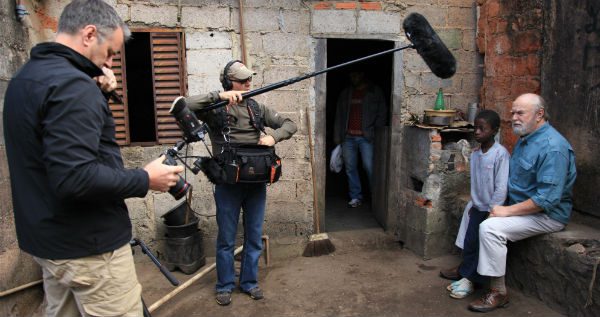Tom Jacobs reports on two new studies on the psychology of charitable fundraising. The most effective appeals, these studies suggest, focus on a single child — and that single child can’t be too photogenic.
It seems that potential donors are most likely to give if an ad or mailing prompts them to feel empathy for the children the appeal says the charity is helping. That’s good — empathy is a Good Thing. It’s easier for people to feel empathy with an individual than with a group — an individual child presents us with a story, a group presents us with a statistic. But it’s apparently harder for us to feel empathy for a child who seems too attractive:
“Attractiveness had a negative effect on the help she was extended when her need was not severe,” researchers found in a study published in the Journal of Consumer Research. “Despite her young age, participants apparently believed that the attractive child was better able than the less-attractive child to secure the care and nurturance she required from adults because of her social competence.”
It seems unseemly for charities to consider factors like this. We don’t like to think of them reading publications like the Journal of Consumer Research. We want them to be focused on the most effective ways to help people, not the most effective ways to manipulate potential donors.
But because of that, we’ve come to measure their efficiency and their priorities by commending those charities that spend the least on “overhead” — meaning things like administration and fundraising. That expectation of low overhead means those charities have to make sure their fundraising is as efficient and effective as possible so that it doesn’t consume too large a share of their time and resources. And that means paying attention to studies like those Jacobs tells us about.
Even the most purely altruistic and mission-focused charitable organizations have to do fundraising. That means hiring people who know how to do that — professionals who know how to get results. Their profession, necessarily, involves a different set of skills, knowledge and experience than the profession of the others who work directly on the mission of the charity. And that means their profession also involves a different set of values — values that don’t always easily align with the altruism of the rest of the organization.
I’m reminded again of the dilemma a friend told me about from his days at World Vision. They had found that the imagery that produced the largest response from donors — by far — was a picture of an older, benevolent white man surrounded by poor dark-skinned children. The whiter the man and the darker the children, the bigger the response.
Using such imagery meant reinforcing condescending, colonial attitudes that undermined their mission. But not using such imagery meant having to spend more time and resources on fundraising and not bringing in as much money to fund their projects.

The benefits of using such colonial imagery were significant and measurable: More people responded by writing checks, and they wrote bigger checks. The detriment of such imagery was harder to measure — the way it undermined the dignity and independence of those served by the charity, the way it substituted a kind of patriarchal benevolence for the justice the organization saw as its mission, the ugly, corrosive racism — is there any other word for it? — that seems to fuel it.
My friend made the case that in the long run, the harm caused by that imagery and the ideology it implied would outweigh the apparent short-term benefits. That was a strong argument, but it was ultimately a statement of faith not backed up by solid evidence or data that could be measured. The existing data weighed against it. That data clearly showed that refusing to rely on such images would mean the agency had X fewer dollars to spend on digging wells, health clinics, schools and economic development. And X was a pretty big number.
See, I am sending you out like sheep into the midst of wolves; so be wise as serpents and innocent as doves. …











